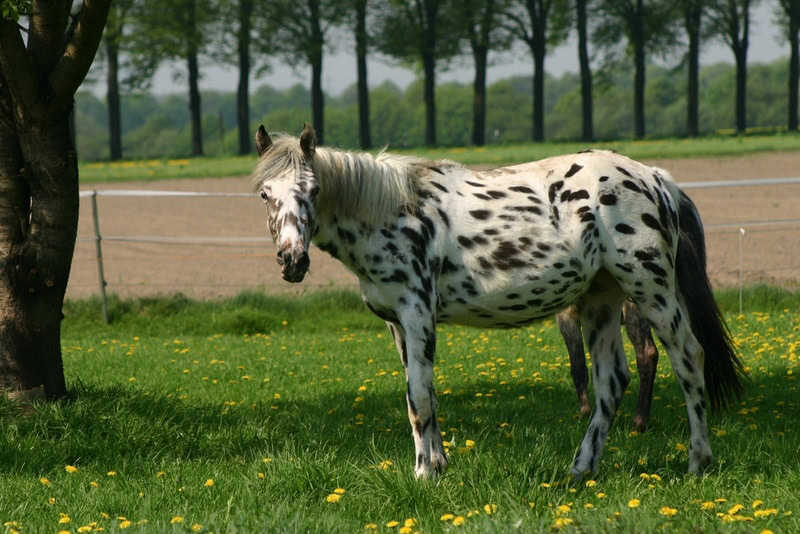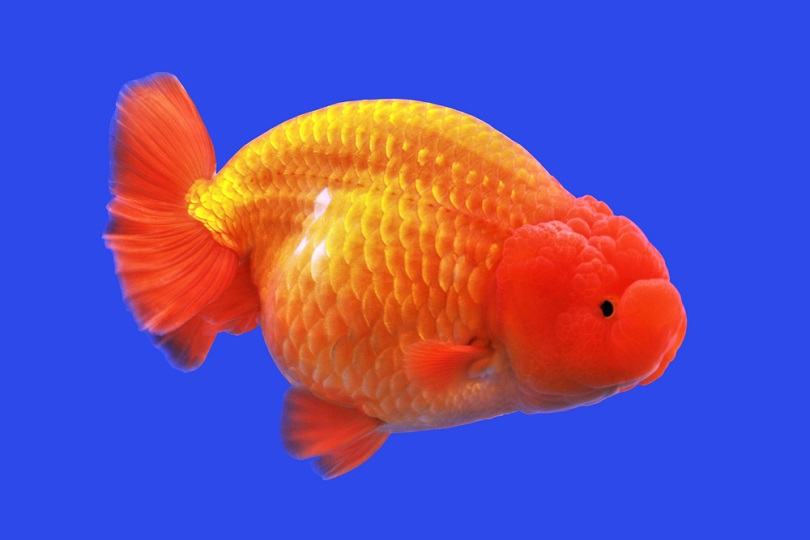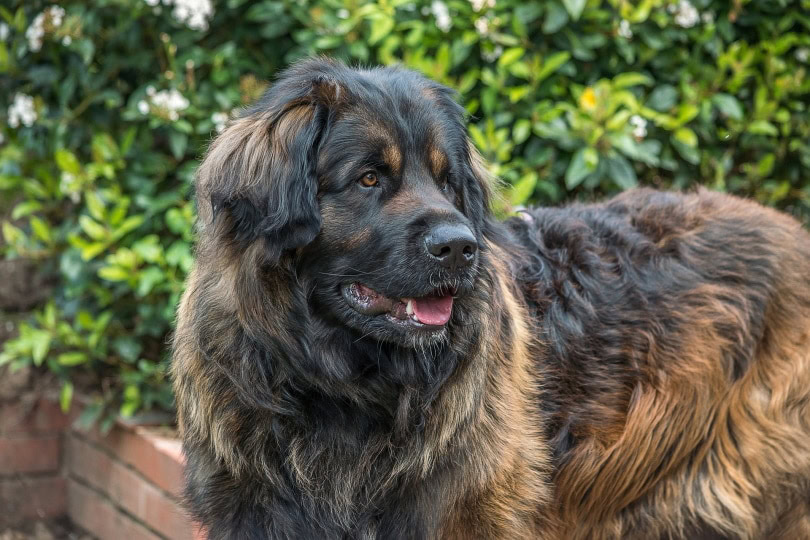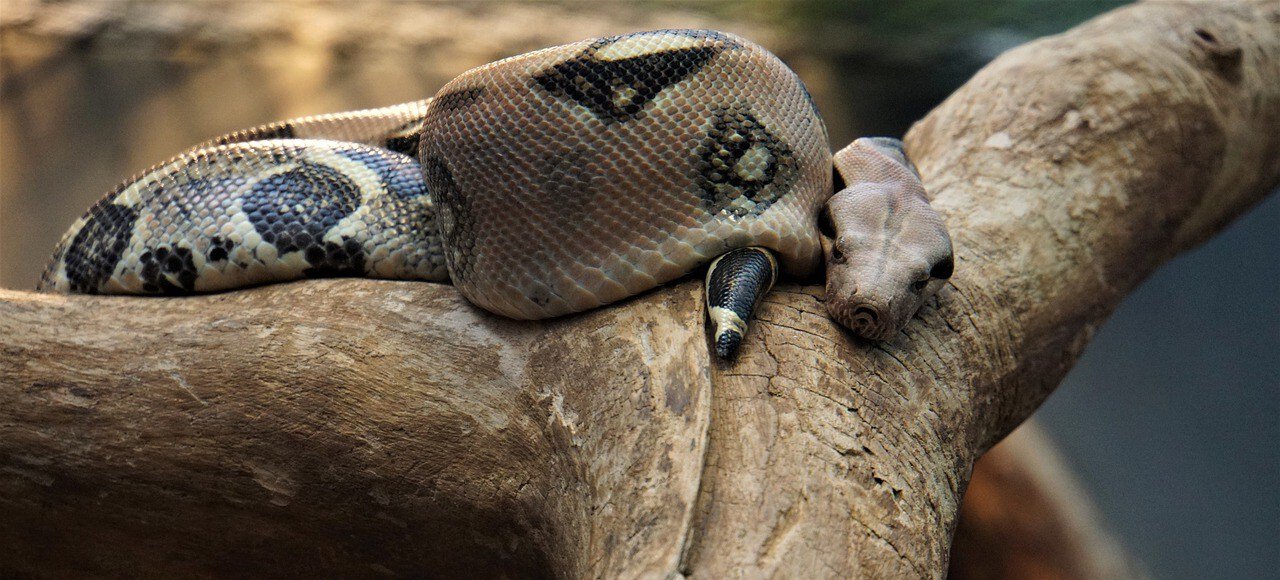Click to Skip Ahead
The Knabstrupper is a beautiful horse with a distinct appearance that reminds many people of Dalmatians. They have a friendly temperament and make a wonderful riding horse.
Due to their rarity, not many people know much about Knabstruppers. Here’s all you need to know about these unique horses.
| Care Level | Beginner friendly |
| Temperature | Cold tolerant |
| Temperament | Friendly, gentle, patient |
| Colors | White body with black, gray, bay, or chestnut spots |
| Lifespan | 26–28 years |
| Weight | 1,100–1,200 lbs. (stallions), 950–1,110 lbs. (mares) |
| Height | 15–16 hands |
Knabstrupper Horses are beautiful in appearance and personality. They have unique spots and markings and are quite gentle and patient. Despite their calm demeanor, they’re reliably active workhorses, and their intelligence makes them good candidates for sporting events and other competitions. Knabstruppers are often mistaken for other spotted breeds, but they’re actually quite rare. So, it’s truly a special treat if you ever come across this horse, especially if you’re in the U.S.
Knabstrupper Horse Breed Characteristics

What Are These Horses Used For?
Knabstruppers are versatile horses that can participate in a variety of contexts. They have a decent amount of endurance, and their compliant and gentle natures make them good workhorses. They’re easily trainable and can become successful sport horses that participate in dressage events, and you can occasionally see them performing in circus acts.
This breed is perfectly content being riding horses, and smaller types are particularly popular among children. Due to their friendliness and patience, they often become beloved family horses. They’re generally healthy and are capable of living past their average lifespan.
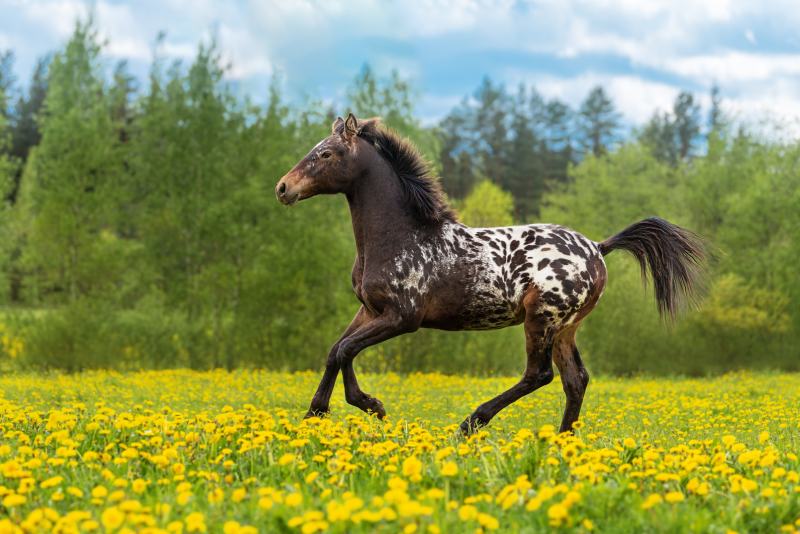
Where Did These Horses Originate From?
The Knabstrupper is an old breed that may have links to the spotted horses that existed during the age of Vikings. They were formally established in Denmark in the early 1800s by crossing a solid-coated stallion with a mare with leopard blanket markings. This resulted in the birth of a foal with a spotted coat. This foal was named Flaebestallion, and it became the foundation mare for future Knabstruppers.
These horses were used as Danish military horses in the Three Years’ War, but this proved to be a detrimental mistake. Due to their spots, they were easy targets, so they were quickly retired from being war horses.
The use of Knabstruppers began to decline, and a fire on the Knabstrup Estate claimed 22 Knabstrupper Horses in 1891. The breed was struggling to survive, especially due to inbreeding. Eventually, other breeds were bred with Knabstruppers to preserve and grow their population numbers.
Temperament & Intelligence of the Knabstrupper Horse
Knabstruppers are known for their versatility and hardiness. These horses have endurance and speed, so they’re reliable work horses and carriage horses. They’re also friendly and easy to train, so they can become successful sporting or show horses. Knabstruppers are captivating and fun to watch because of their graceful and light stride.
These horses are relatively easy to care for. They’re adequate and capable workers, but they’re more often involved in dressage, show jumping, and general riding. They can also be good family horses because they’re known to be gentle with riders and patient with children.
While Knabstruppers are considered ideal for novice horse keepers, they’re quite rare. So, they’re difficult to come across and are relatively expensive.
Appearance & Varieties
Knabstruppers are well known for their elegant appearance. They have beautiful, expressive eyes and small ears. They’re broad-chested with sloping shoulders and long, powerful legs.
These horses have beautiful spotted coats that come in a variety of patterns. They are typically solid white with bay, black, gray, or chestnut spots. These spots can be either evenly distributed or only on certain parts of the body, such as just the hindquarters.
The Knabstrupper is one of the few breeds that can be presented in all different sizes. That said, you can find three main varieties:
- Sport horse
- Baroque
- Pony
The sport horse type is specifically bred for events like dressage and show jumping. Baroque types are used for driving carriages and circus performances. Pony types are often seen as riding horses for children.
Knabstruppers are known for their spots, and you can find them with one of the following coat varieties:
- Leopard Spot
- Near Leopard
- Few Spot/Few Spot Leopard
- Spotted Blanket
- White Blanket
- Snowflake
- Frosted Hip/Frosted Blanket
- Marble
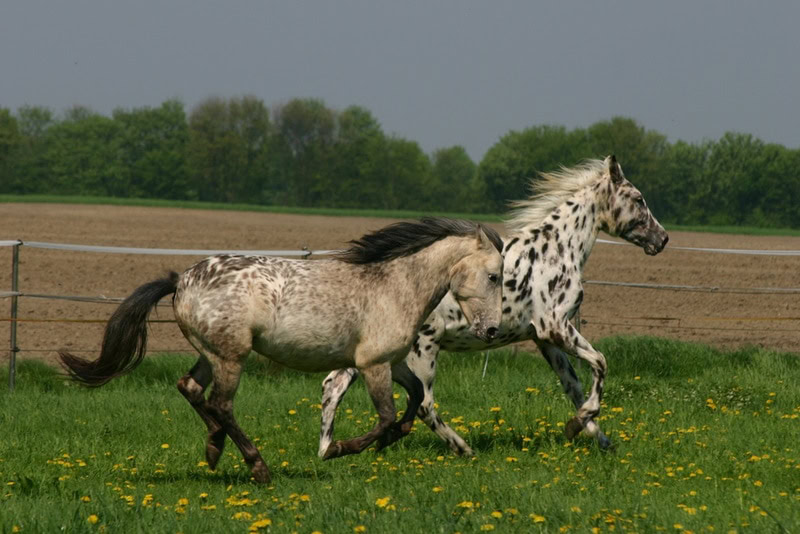

Things to Know When Owning a Knabstrupper Horse
Habitat & Stable Requirements 🌾
Since Knabstruppers require a good amount of exercise, they’ll appreciate being in stable setups with large outdoor spaces. At a minimum, they’ll need a three-sided run-in shelter. However, since they have sensitive skin that’s prone to sunburn, it’s best to keep them in a cozy stable, especially if you live in warmer climates. They’re typically not picky and do well in traditional stables and barn stables.
Food & Diet Requirements 🥕
Knabstrupper Horses’ diets don’t really require anything out of the ordinary of general horse diets. They need to have daily access to high-quality hay, fresh grass, and grains. Horses that are involved in sporting events or are actively working commonly require vitamin and mineral supplements. It’s best to consult an equine veterinarian to determine if supplements are appropriate and necessary.
Your Knabstrupper will appreciate having some fruits and vegetables as occasional treats. Keep in mind that fruits shouldn’t make up a significant part of a horse’s diet because of their high sugar content. Eating too much fruit can lead to excessive weight gain, which can quickly lead to horses developing other significant health issues.
Exercise 🐎
Knabstrupper Horses require a good amount of daily exercise. They’re hardy and have a good amount of stamina and energy to expend. While they don’t need to be ridden every day, they do need plenty of opportunities to graze. They’ll appreciate grazing or spending a couple of hours of hand-walking or being ridden at a leisurely pace.
When exercising a Knabstrupper, make sure to spend an appropriate amount of time warming them up, especially if you plan to ride them. Proper warmups will reduce the risk of injury and help your horse exercise more comfortably.
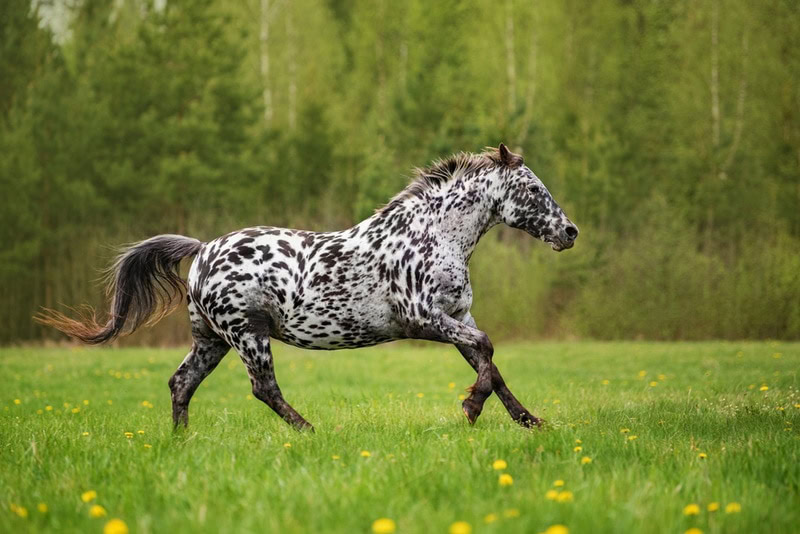
Training 🐴
Knabstruppers are intelligent and intuitive, and they’re known to be easy to train. They’re able to make strong connections with their handlers and riders, and they often enjoy training for and participating in various events and equestrian competitions.
Keep in mind that some of these horses may have a stubborn streak. However, you’ll find that as you develop a bond with a Knabstrupper, they become quite trusting, and training gets easier with time.
Grooming ✂️
Knabstruppers don’t have particularly unique grooming requirements. You’ll probably find a hoof pick to be a well-used tool because these horses like to move around and can get dirt, debris, and mud stuck in their hooves. A curry comb is another essential grooming tool, along with a high-quality mane and tail brush. They’ll require weekly brushing, but you can brush them every time before you ride if you notice that this helps your horse relax and stay focused.
Knabstruppers don’t need to be bathed frequently because they have sensitive skin that’s prone to over-drying. Since they’re also prone to sunburn, make sure to apply horse sunscreen before riding, especially if you live in hotter climates.
Lifespan & Health Conditions 🏥
Knabstruppers are relatively healthy and hardy. If you provide this horse with a healthy diet and plenty of exercise, they’re likely to live a long and healthy life. However, there are some predisposed genetic conditions to be aware of.
- Equine recurrent uveitis
- Congenital stationary night blindness
- Stomach ulcers
- Ringworm
- Laminitis
- Sunburn

Male vs. Female
There isn’t much difference in behavior and temperament when you compare male and female Knabstruppers. The main difference you’ll notice is size, as males tend to be slightly larger than females. Males may also be a little stronger and have more endurance than females.


3 Little-Known Facts About Knabstrupper Horses
1. Knabstrupper Horses Are Extremely Rare
Knabstruppers are extremely rare in the U.S., with just a handful of breeding programs established throughout the entire country. This breed is comparatively more numerous in Europe, but it’s still not as prevalent as others. Along with Denmark, Knabstruppers are bred in Germany, Italy, Norway, Sweden, Switzerland, the U.K., and the Czech Republic. You can also find a few breeders in Australia and New Zealand.
It’s believed that the worldwide population of Knabstruppers is only about 600 horses. Today, they can be bred with other breeds to increase their population. This can also prevent inbreeding while still passing on the recessive leopard spot gene.
2. Knabstrupper Spots Are Caused by the Leopard Complex Gene
It’s difficult to control the spotted patterns and colorations because the spots are linked to a recessive gene known as the leopard complex gene. This causes horses to have a white coat with or without a pattern of pigmented spots. In some cases, Knabstruppers can be a solid color without spots, even if they’re carriers of the recessive gene.
3. Knabstrupper Horses Are Commonly Mistaken as Appaloosas
Due to their spots, Knabstruppers are often mistaken for Appaloosas. While Appaloosas have been used for breeding and preserving the Knabstrupper population, these two breeds are distinct from each other.
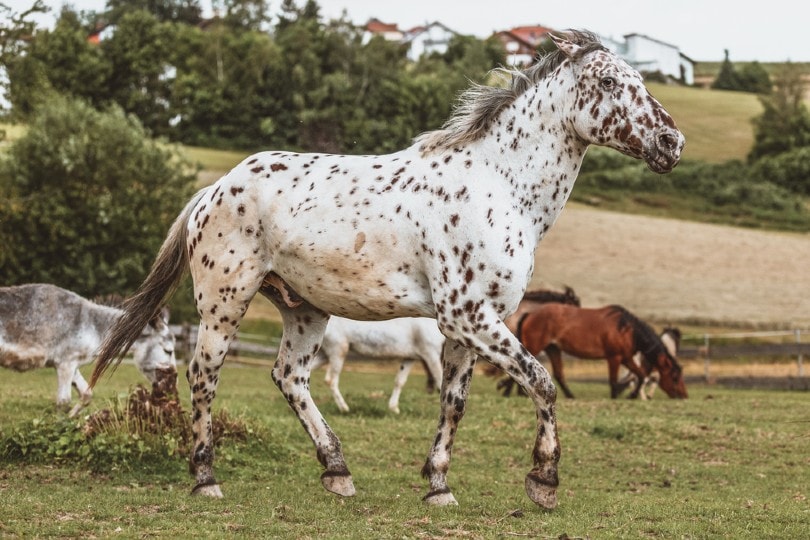

Final Thoughts
Knabstruppers are rare beauties with lovely temperaments, and it’s truly a delightful experience if you’re lucky enough to meet one in person. We hope to see more of these horses appear in the future as breeding programs continue to work to protect and grow their population numbers. For now, your best bet in encountering a Knabstrupper is at equestrian events or circus shows.
Featured Image Credit: Sabine Hagedorn, Shutterstock
